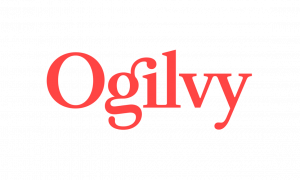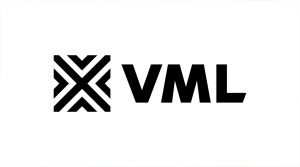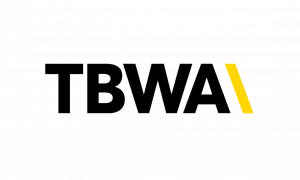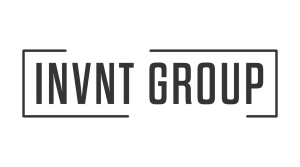Earlier this year, WPP announced the acquisition of influencer marketing agency Goat. Founded in 2015, the acquisition saw Goat merge with GroupM’s influencer marketing solution INCA.
The newly-formed entity, which took the name Goat, launched with more than 300 employees in over 30 markets worldwide.
Noting the importance of the segment at the time of the acquisition WPP CEO Mark Read said “Influencer marketing is a key growth priority for the industry and for WPP. Our clients are increasingly planning budgets at a global scale and require partners that have the global reach to help deliver, whilst driving engagement and impact at a local level.
To get more insight into the merger as well as the expanding influencer marketing segment, we recently spoke with Arthur Altounian, Vice President of Client Strategy & Growth for APAC at Goat.
Tell us more about the merger between INCA and Goat. How will this move enhance Goat’s influencer marketing capabilities on a larger scale and how is it shaping up thus far?
As Goat, we’ve over 350 influencer specialists and consider ourselves to have the only truly scaled influencer solution on the market. Our service offering is very much white-glove, encompassing the full suite of influencer strategy, campaign management, and reporting, which is fueled by our cutting-edge proprietary technology platforms.
In the Asia-Pacific (APAC) region, influencer marketing continues to grow from strength to strength, with market growth of 32.8% CAGR during the forecast period (2019-2025). With specialists based across all major markets in APAC, we’re well-placed to continue capitalising on this growth
How are the two agencies integrating their respective talents and expertise to provide better value to clients?
The addition of Goat into GroupM as part of GroupM Nexus represents a significant enhancement of our capabilities and market coverage. This move enables us to provide clients worldwide with accountable, cross-channel, and data-driven influencer solutions. The synergy between Goat’s proven excellence in the influencer marketing space and the exceptional talent at INCA positions Goat to play a pivotal role in shaping the future of media within GroupM.
As our clients increasingly plan budgets on a global scale, there is a growing need for partners with expansive reach combined with deep local market understanding. The combination of Goat’s track record and GroupM’s legacy of excellence is set to further fortify our unparalleled expertise in influencer marketing.
Can you discuss some of the challenges related to large-scale influencer marketing campaigns across diverse markets in APAC? How do you address these challenges to provide personalized, impactful engagement at the local level?
Navigating large-scale influencer marketing campaigns across diverse markets in the Asia-Pacific (APAC) region presents several challenges that demand careful consideration. Firstly, it’s crucial to adeptly translate global creative concepts and ideas to ensure resonance with local needs and consumer behaviours.
While the allure of a global or regional brand ambassador is enticing, a realistic assessment of their reach and engagement in specific markets is necessary for gauging potential impact, especially in the context of upper-funnel strategies where celebrity recognition may be a key factor.
“This shift goes beyond endorsements, with influencers actively participating in real-time product sales, marking a paradigm shift towards performance-driven marketing.”
Moreover, tailoring strategies to align with varied platform preferences across different countries within APAC is essential. Striking a delicate balance between maintaining brand consistency and messaging while accommodating cultural nuances is a complex undertaking in diverse markets.
This challenge requires a nuanced approach that appreciates the diversity of consumer behaviours and preferences. Additionally, compliance with data privacy regulations, localised data protection laws in this region, and adherence to the latest social commerce regulations, such as those in TikTok Indonesia, are essential. Managing customer data responsibly ensures not only legal compliance but also fosters trust among consumers, contributing to the success of personalised and impactful engagement at the local level.
What are some key trends that you are seeing in the influencer marketing industry in APAC? How is Goat adapting its strategies to meet these trends?
In the evolving landscape of APAC’s influencer marketing, a notable trend has emerged, marked by a substantial increase in live streaming. Platforms such as TikTok, particularly popular in Indonesia, Thailand, and Vietnam, have become focal points for this surge. A noteworthy 42% of individuals have engaged in livestream shopping in the past 12 months, particularly evident in the Beauty and Tech sectors.
This shift goes beyond endorsements, with influencers actively participating in real-time product sales, marking a paradigm shift towards performance-driven marketing. Based on our internal research from GroupM Consumer Eye 2023 Wave 6, this interactive approach has proven successful, with 50% of viewers discovering new products or brands during live streams, and an impressive 37% making direct purchases, showcasing the effectiveness of this emerging influencer strategy.
“The trend of virtual influencers is gaining momentum in the APAC region, particularly in countries like Japan, South Korea, and China. This phenomenon is especially pronounced in the entertainment and fashion sectors…”
At Goat, we’re dedicated to adapting to SEA’s influencer marketing trends, investing in strategic partnerships, studio facilities, production capabilities, analytics infrastructure, and process management to better serve our clients. Simultaneously, we’re witnessing a significant shift in influencer preferences, with approximately 51% favoring micro and nano influencers. Brands are increasingly partnering with smaller, niche influencers for more targeted and authentic campaigns, necessitating tailored partnerships and technology leverage for effective campaign management.
Furthermore, the influencer marketing landscape is experiencing a growing reliance on AI and data analytics. These tools are crucial for influencer selection, campaign monitoring, and ROI measurement. The abundance of data empowers data-driven decisions, refining strategies for improved client outcomes.
Concurrently, we’re closely monitoring the evolution of AI-generated creative and content, exploring its potential to enhance influencer marketing strategies and provide clients with unique and innovative solutions.
How are things going with virtual influencers? What is the current state of that segment and where do you see it going in the future?
The trend of virtual influencers is gaining momentum in the APAC region, particularly in countries like Japan, South Korea, and China. This phenomenon is especially pronounced in the entertainment and fashion sectors, where virtual influencers are becoming integral to promotional and branding campaigns.
Notably, these types of influencers have managed to amass substantial followings, and their collaboration with brands reflects engagement levels comparable to their human counterparts. The current state of the virtual influencer segment indicates a growing acceptance and recognition of their impact in the marketing landscape, with notable adoption and success in key markets.
Looking ahead, it’s foreseeable that the influence of virtual influencers will continue to expand across APAC, including Southeast Asia. As more countries and industries recognise the potential of virtual influencers, their presence is likely to become more ubiquitous in diverse sectors. The future may see virtual influencers forming partnerships and collaborations with human influencers, creating a hybrid approach that combines the unique appeal of digital personas with the authenticity of real-world endorsements.
What advice do you have for brands considering working with influencers including those smaller brands with limited budgets looking to capitalize on the trend?
For brands, irrespective of their budget constraints, there is a valuable space in the realm of influencer marketing, and success hinges on several key factors. Firstly, it’s imperative to establish a clearly defined role for influencer marketing within the broader digital strategy. This foundational step helps align influencer collaborations with overarching business goals. Setting realistic expectations is equally crucial — smaller brands with limited budgets should articulate achievable benchmarks for success, understanding what constitutes a “win” in the context of their specific objectives. A well-thought-out strategy, creativity, tailored to the brand’s unique needs, audience, and industry will contribute to making the most of available resources.
Effective measurement and tracking mechanisms are paramount, too. Even with limited budgets, brands can implement robust strategies to assess the impact and ROI of influencer campaigns. Emphasising authenticity is a guiding principle, urging brands to stay true to their values and narrative. Copying strategies from other brands may not resonate authentically with the audience.
Quick Hits:
Book everyone in the industry should read: (Title & Author)
“The coming wave” from Mustafa Suleyman
Favorite show you’ve been watching lately:
The latest series of “Netflix Explained”
One album you would take to a deserted island: (Title & musical artist)
“2001” from Dr Dre
Something you want to learn or wish you were better at:
I am a social golfer and wish could be better (working on it)
































